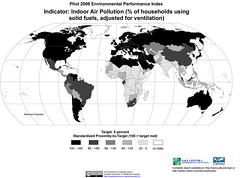Also discussed here: Should the Market Alone Determine Parking Supply?(Eric Jaffe, The Atlantic Cities, Oct. 9, 2012)
Today we review a post from a transport engineer in New Zealand about the recent reforms in parking regulations there and in San Francisco and London where the minimum parking requirement for developers for off-street parking has been replaced with a parking on demand approach for onstreet parking that has both reduced building costs and increased the overall amount of parking spaces available. As the article points out, this result is counter-intuitive because most people in large cities believe that there is never enough parking and what there is overpriced. More efficient use of parking has been shown to reduce unnecessary driving and congestion in urban areas with improved air quality as a side benefit. Don't more cities need to look at this?

Key Quotes:
“the topic of parking .. one of those topics you should avoid bringing up in the course of polite conversation, lest you wish to offend your hosts…while many cities tend to have an over-supply of under-priced parking, most inhabitants of those cities believe exactly the opposite”
“the supply of off- and on-street parking will always struggle to keep pace with the rate that cities grow. And of course combining constrained supply with growing demand will lead almost inexorably to higher prices. This relationship is the main reason why larger cities tend to command higher parking prices”
“regulations that required new developments to provide large amounts of off-street parking. …The primary impact of minimum parking requirements was to increase the supply of parking and lower the direct cost of parking for drivers.”
“In 2004, London reformed its parking policy to encourage alternative transportation modes. The city replaced its minimum parking standard, which required developers to create a certain number of parking spaces and has been found to increase driving, with a cap on spaces…parking reform reduced the parking supply roughly 42 percent”
“after 2004.. Central London's "deregulated parking market appears to provide more parking in the densest and transit-richest areas”
“Until recently San Francisco was the only city that had really forged ahead with major on-street parking reforms.. Auckland has recently followed a similar line to San Francisco.. .. removed time-limits in most places that were covered by pay parking. In these areas prices are now the primary demand management tool: If demand goes up then rates go up, and vice versa."




















































